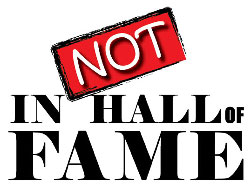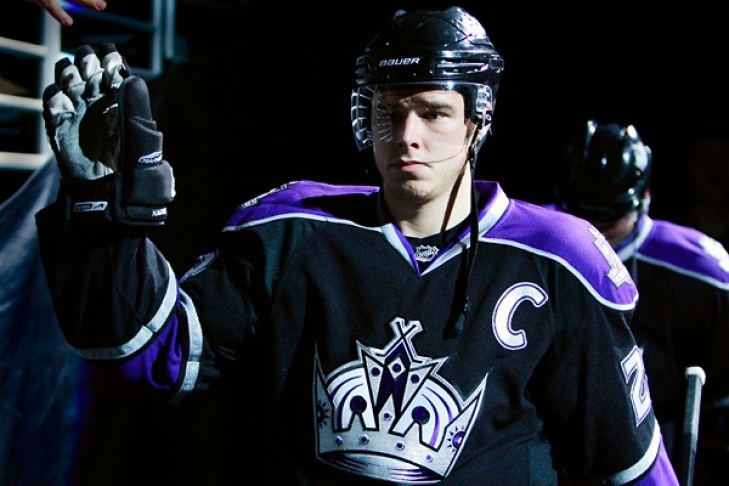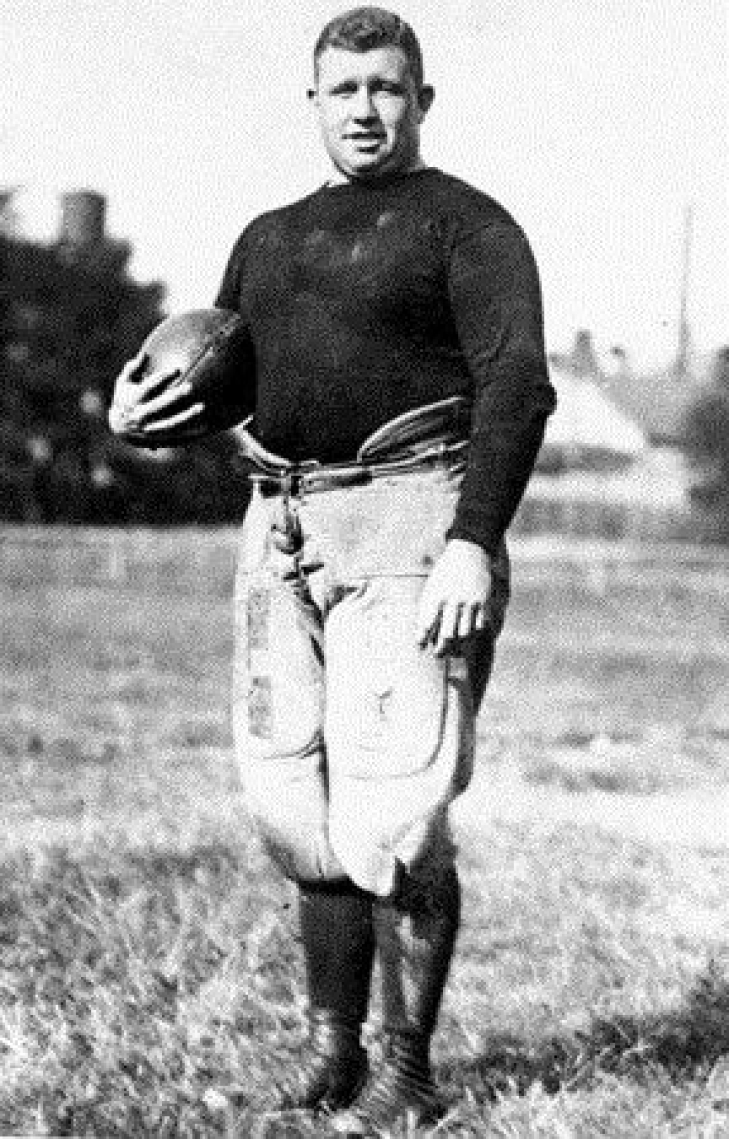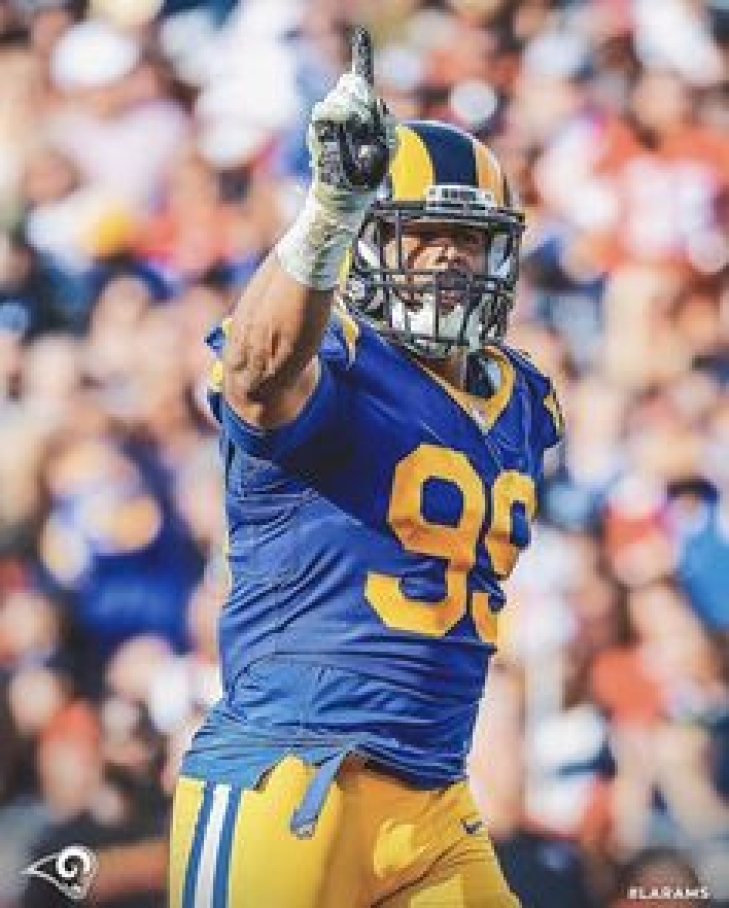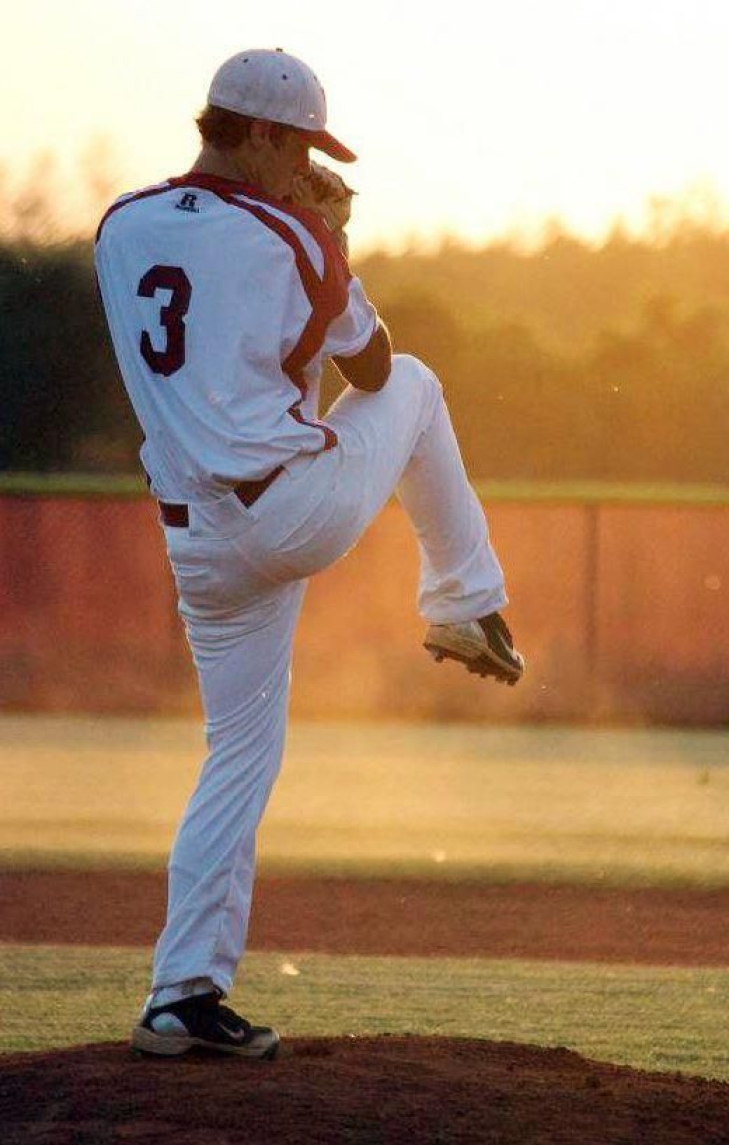
Committee Chairman
Dustin Brown and Jamie Langenbrunner named to the U.S. Hockey Hall of Fame
The United States Hockey Hall of Fame announced five new members into their Minnesota-based institution, which comprises Dustin Brown, Jamie Langenbrunner, Brian Burke, Katie King Crowley and Brian Murphy.
Brown played all 18 of his NHL seasons with the Los Angeles Kings where the pounding Right Wing scored 712 Points and was the team captain for their Stanley Cup wins in 2012 and 2014. An All-Star in 2009, Brown also won the Mark Messier Leadership Award in 2015. Representing the United States, Brown played in two Olympic Games, winning Silver in 2010. He also played in four World Hockey Championships, and has a Bronze Medal from the 2004 competition.
Langenbrunner also played 18 years in the NHL, though this Right Wing played for three different teams, Dallas, New Jersey and St. Louis. Winning a Stanley Cup with the Stars in 1999 and the Devils in 2003, Langenbrunner amassed 663 NHL Points. Internationally, Langenbrunner was the captain of the U.S. Silver Medal Winning Team at the 2010 Olympics, and also played at the ’98 Games and the 2004 World Cup of Hockey.
Burke had a long career as an administrator, punctuated with a Stanley Cup Championship as the Anaheim Ducks GM in 2007, and he was also the GM of the U.S. Silver Medal Team in 2010. He is currently serving as the Executive Director of the new Professional Women’s Hockey League.
King Crowley scored 14 Goals for the U.S. in the Olympics and she helped her nation win Gold in Nagano in 1998. She is currently the Head Coach of the Women’s Hockey Team at Boston College where she has led her squad to six Frozen Fours.
Murphy is one of two Americans to have officiated in over 2,000 Games. He has also officiated in nine Stanley Cups.
We here at Notinhalloffame.com would like to congratulate the new and impending members of the U.S. Hockey Hall of Fame.
The Pro Football Hall of Fame Revisited Project: 1948 FINAL VOTE
Here we are! Again!!
If you have been following our Pro Football Hall of Fame Revisited Project, you know that we have asked the rhetorical question…what if the PFHOF began in January of 1946?
After soliciting and obtaining a passionate group of football fans and historians, we sent out a ballot for a Preliminary Vote, which we asked each voter to give us 25 names as their semi-finalists, and 5 in the Senior Pool. Following that, we asked the group to vote for their 15 Finalists in the Modern Era, and 3 in the Senior Category. The final stage was to vote for their 5 Modern Era inductees and 1 Senior inductee.
This is the result of the third official class;
Below, are the final results of this project based on 32 votes:
This is for the “Modern Era”
*Bold indicates they have been elected to the Pro Football Hall of Fame Revisited Class of 1948:
|
Player |
Year of Eligibility |
Vote Total |
|
Duke Slater T |
12 |
21 |
|
Pete Henry T |
15 |
19 |
|
Guy Chamberlin E-WB |
16 |
18 |
|
George Trafton C |
12 |
16 |
|
Benny Friedman TB-DB |
9 |
15 |
|
Joe Guyon WB-TB-BB-FB |
16 |
12 |
|
Johnny Blood TB-HB-WB-BB-DB |
5 |
10 |
|
Jimmy Conzelman BB-TB-HB-E |
14 |
8 |
|
Clark Hinkle FB-LB-HB-DB |
2 |
8 |
|
Lavvie Dilweg E |
9 |
7 |
|
Mike Michalske G-T-LB-BB |
8 |
7 |
|
Verne Lewellen B |
11 |
6 |
|
Dutch Sternaman HB-QB-FB |
16 |
5 |
|
Cliff Battles TB-FB-WB-DB |
6 |
5 |
|
Link Lyman T |
9 |
3 |
This is for the “Senior Era”
*Bold indicates they have been elected to the Pro Football Hall of Fame Revisited Class of 1946:
|
Charles Follis |
N/A |
19 |
|
Ted Nesser |
N/A |
7 |
|
Henry McDonald |
N/A |
4 |
|
1 person abstained |
About the 1948 Inductees:
Duke Slater T, MIL 1922, RII 1922-25, CRD 1926-31: Inducted in 1948 on the 3rd Ballot (technically his 12th year of eligibility). Was inducted into the actual Pro Football Hall of Fame in 2020.
One of the best Tackles of the 1920s, Duke Slater shattered barriers everywhere he went. A superstar at the University of Iowa where he was a three-time All-Big 10 Selection, Slater played two games for the Milwaukee Badgers before he signed with the Rock Island Independents where he played for four years. He signed with the Chicago Cardinals in 1926, making him the first African-American player who signed with a team still in existence. A Cardinal until 1931, Slater was consistently named an All-NFL player, which considering the racial bias that existed was a testament to his undeniable skill. Following his career, Slater would graduate from law school and later became the first African-American judge to serve on the Superior Court of Chicago.
Guy Chamberlin E, CHI 1920-21, CAN 1922-23, CLE 1924, FRN 1925-26 & CRD 1927: Inducted in 1948 on the 3rd Ballot (technically his 16th year of eligibility). Was inducted into the actual Pro Football Hall of Fame in 1965 as a Coach.
Chamberlin was inducted into the actual Pro Football Hall of Fame in 1965 as a Coach, but for the purposes of this exercise, he is here as a player, and deserves to be. An 1920s All-Decade End, Chamberlin was a legend at the University of Nebraska and he followed his hero, Jim Thorpe, to the Canton Bulldogs where in 1919 where he helped them win the Ohio Championship. Chamberlin then made history as a player winning the first four NFL Titles, the first two with Chicago and the next two back with Canton, where he also served as their Head Coach. A fifth title came with the Frankford Yellow Jackets in 1926 where he again had the dual capacity of playing and coaching.
Pete Henry T, CAN 1920-23 & 1925-26, NYG 1927 & POT 1927-28: Inducted in 1948 on the 3rd Ballot (technically his 15th year of eligibility). Was inducted into the actual Pro Football Hall of Fame in 1963.
A three-time All-American at Washington & Jefferson, Henry signed with the Canton Bulldogs in 1920 and played for them that very day. A two-way player, Henry was short and stout (5’ 11 and 245), and was nicknamed “Fats”, but that hid what was a premier athlete, and one of the largest players of his time. Henry was a First Team All-Pro in his first four seasons, and he helped lead the Bulldogs to two NFL Championships. The Tackle was also an excellent kicker and punter, setting marks for the longest Punt (94 Yards) and Longest Dropkick Field Goal (50 Yards).
George Trafton C, CHI 1920-32: Inducted in 1948 on his 3rd Ballot (technically his 12th year of eligibility). Was inducted into the actual Pro Football Hall of Fame in 1964.
George Trafton was one of the game’s first pure Centers, and a true innovator of the position. Trafton, who like all players from the 1920s, played 60 minutes, and he was with the Chicago Bears for his entire 148-Game career. Trafton was the first player to use one hand to snap the ball, and when he was on the defensive side, he was the first to rove. He would win two NFL Championships and was twice a First Team All-Pro.
Benny Friedman TB-DB, CLE 1927, DET 1928, NYG 1928-31 & BKN 1931-34: Inducted in 1948 on his 3rd Ballot (technically his 9th year of eligibility). Was inducted into the actual Pro Football Hall of Fame in 2005.
Benny Friedman played a large part in the evolution of passing, first as a two-time All-American at Michigan and then in the NFL. In his second season, Friedman led the league in Rushing and Passing Touchdowns, the first and to date only time that has occurred. The year after, in his first season with New York, threw 20 Touchdown Passes, a record that stood for years. Had a knee injury in 1931 not hampered his play, he would have been in the actual Pro Football Hall of Fame decades earlier. As for us, we are pleased to welcome him into our third Hall of Fame Class.
Charles Follis: Inducted in 1948 on the 3rd Senior Ballot. Was never inducted into the Pro Football Hall of Fame.
Charles Follis was nicknamed “The Black Cyclone” and he first played football with the Wooster Athletic Association in Wooster, Ohio. After a two-game series against the Shelby Blues, the team manager poached Follis to join their team. In 1904, he signed a contact with the Blues, making him the first African-American to be paid to pay professional football, and he is regarded as the finest player in team history.
Our 2023 Pre-Season Active Hall of Fame Monitor is up
The 2023 National Football League Season begin tonight, and we are ready with our revised list of the top 150 active (or hoping to be) players based on their existing Hall of Fame resume.
This is our fourth pre-season monitor, and you can find it all here.
A quick synopsis shows that we have the following:
19 Quarterbacks are ranked, including a brand new number one overall, Aaron Rodgers, now of the New York Jets. Kansas City’s Patrick Mahomes rocketed to #10 and Russell Wilson of the Denver Broncos regresses to #11.
Only 12 Running Backs are ranked, with no player in the top 25 overall. The surprising top player at this position is Alvin Kamara of New Orleans.
Wide Receivers are more represented with 21 on the list. Julio Jones is the only one in the top ten (we still rank Free Agents who we think have a shot to return) with three others in (#18 Tyreek Hill, #20 DeAndre Hopkins and #24 Davante Adams) in the top 25.
Only 5 Tight Ends are ranked with Travis Kelce at #7.
22 Offensive Lineman are on the list, including three players in the top ten (#6 Zack Martin, #8 Trent Williams and #9 Jason Peters). There are two other players in the top 25 with Jason Kelce (#12) and Tyron Smith (#16).
On the defensive side, there are 23 Defensive Lineman, led by the Rams’ Aaron Donald, who is ranked #2 overall. Other Defensive Lineman in the top 25 are #17 Cameron Jordan, #19 Calais Campbell and #25 Ndamukong Suh.
With the Linebackers, we have the only position where there are two in the top five, which are Seattle’s Bobby Wagner and Buffalo’s Von Miller who are #3 and #4 respectively. There are 19 overall, and two more in the top 25, #14 Khalil Mack and #15 T.J. Watt.
There are 13 Cornerbacks who are ranked, led by Patrick Peterson of the Steelers at #13. There is one other Cornerback in the top 25 with Jalen Ramsey at #23.
At the Safety position, there are 12 who are ranked, but it takes you all the way to #63 (Minkah Fitzpatrick) before we see our first one.
There are five Special Teams players, led by Ravens Place Kicker, Justin Tucker at #23.
As always, we thank you for your support of the site and look for more improvements, content and lists in the future.
How To Play Baseball: A Beginner's Guide
Do you want to play a classic, fun game like baseball? Do you want to know everything about it before you start? You've come to the right place.
Baseball is an enjoyable game that anyone can enjoy regardless of age or skill level. With this beginner's guide on How To Play Baseball, we'll cover all the basics and help launch your journey as a player.
From equipment needed to how each inning works, we'll give you great tips and valuable information so that you can confidently take up America's favorite pastime.
Understand the Basics of Baseball – Rules, Positions, and Equipment Needed
Baseball is a classic American sport that fans have loved for generations. While it may seem daunting to newcomers, once you understand the basics of baseball, it becomes a thrilling and engaging game to watch and play.
Familiarizing yourself with the rules and positions is key to enjoying the game fully.
Each player on a team has a specific position with unique responsibilities, from pitcher to catcher to outfielder.
Additionally, several pieces of equipment are needed to play, including a glove, bat, balls, and protective gear.
Learn the Field Layout and Composition
Baseball is a game of strategy, and understanding the layout and composition of the field is essential for success.
Every detail plays a crucial role in the game, from the placement of the bases to the dimensions of the outfield.
Players must be aware of each stadium's unique features and adjust their strategies accordingly.
Moreover, the opposing team's players' position must also be considered when creating offensive and defensive plays.
Whether you're a seasoned player or a newcomer to the sport, mastering the field layout and composition is vital to becoming a skilled and successful baseball player.
Practice Throwing and Catching with a Partner
One of the essential baseball skills is the art of throwing and catching with a partner. Completing a successful throw or catch can be the difference between a run being scored and an out being made.
The beauty of practicing with a partner is that it builds trust and teamwork. When you take the field, you'll know your partner will be there to back you up.
Throwing and catching with a partner sets the foundation for success in baseball and is an excellent way to enhance your skills.
Learn How to Bat Properly – Stance, Grip, Swing Mechanics
"If you want to hit the ball out of the park, you need to start with the basics – your stance, grip, and swing mechanics." - Speaks, Sayed from SportsDomainLab.
These are the building blocks for a successful baseball swing, and getting them right could be the difference between a home run and a strikeout.
It all starts with your stance, which sets the foundation for your swing. Your grip is equally important – you need to hold the bat in a way that gives you control but still allows you to generate power.
Finally, your swing mechanics determine how well you can hit the ball and what direction it will go in.
Improve Your Base Running Skills – Lead Offs, Steals, Tags
Whether you're a seasoned baseball player or just starting to learn the game, base running has room for improvement.
The ability to properly execute lead-offs, steals, and tags can significantly impact a game's outcome and enhance your performance on the field.
Leading off the base correctly can give you a head start in stealing bases while perfecting your technique for stealing can help you avoid getting tagged out.
And speaking of tags, knowing when and how to execute them can be the difference between an out or a safe call.
Develop Mental Strategies for Enhancing Performance in the Field
It takes more than just physical abilities to succeed on the field.
Developing strong mental strategies is essential for enhancing performance and achieving your goals.
One way to do this is by practicing visualization techniques, allowing you to mentally prepare for a game or practice beforehand.
Another effective strategy is developing a routine that helps you get in the right mindset before stepping onto the field.
Learning to manage stress and stay focused during high-pressure situations can also greatly improve performance.
No matter what mental strategies you choose to implement, remember that they require practice and consistency to truly impact your performance.
Participate in Regular Games and Drills to Enhance your Skill Set
By participating regularly, you'll have the chance to work on everything from your batting technique to your fielding skills.
Drills are an especially valuable tool in this regard, as they allow you to hone in on specific skills and improve them in a targeted way.
The more you practice, the more confident you'll become in your abilities, and the better you'll be able to contribute to your team's success.
Take Care of Your Body – Stretching & Nutrition Habits for Athletes
As a baseball athlete, caring for your body is crucial to performing at your best on the field.
Incorporating stretching and nutrition habits can significantly impact your overall health and performance.
Stretching helps to prevent injuries and improve flexibility, allowing you to make quick, explosive movements on the diamond.
In addition, fueling your body with the right nutrients can provide you with the energy and stamina you need to power through practices and games.
By prioritizing stretching and nutrition, you can give yourself an edge on the field and set yourself up for success in baseball and beyond.
Have Fun and Enjoy The Game.
Last but not least, it's important to remember that baseball should be enjoyable. You don't have to take the game too seriously – focus on having fun and enjoying every moment.
Take time between innings to chat with teammates or opponents, use every practice to learn something new, and find ways to make the most of each game.
The beauty of baseball is that it brings people together. Whether you're playing in a Little League, high school, or college game, the shared enjoyment of the sport will surely make every experience special and unforgettable.
At its core, baseball should be enjoyable and rewarding – so don't forget to have fun.
Conclusion
Baseball is an exciting and challenging sport that requires dedication, skill, and a strong commitment to the game.
You can become a highly skilled player by mastering the beginner's fundamentals – such as field layout, throwing and catching with partners, batting mechanics, base running skills, mental strategies, drills, stretching, and nutrition habits.
